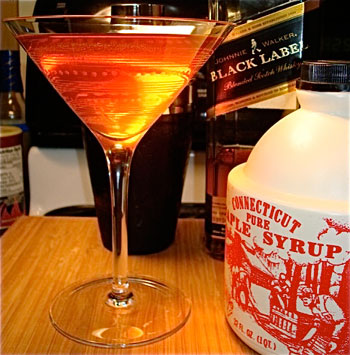 For a long time, the closest I had ever come to what I thought was a real fig was the dried kind or Fig Newtons. It wasn't until a family friend gave us a fig tree that I learned figs are actually fresh before they are dried. Not only that, but I discovered that fresh figs were worlds apart from the dried ones. We weren't the only family with a fig tree in the neighborhood. Italian and Portuguese neighbors had them too. That's because figs are native to the Mediterranean region, where they have been revered since ancient and biblical times. You can't not find mention of it in ancient Greek and Roman texts and of course the Bible's creation story. What would we have done without fig leaves?
For a long time, the closest I had ever come to what I thought was a real fig was the dried kind or Fig Newtons. It wasn't until a family friend gave us a fig tree that I learned figs are actually fresh before they are dried. Not only that, but I discovered that fresh figs were worlds apart from the dried ones. We weren't the only family with a fig tree in the neighborhood. Italian and Portuguese neighbors had them too. That's because figs are native to the Mediterranean region, where they have been revered since ancient and biblical times. You can't not find mention of it in ancient Greek and Roman texts and of course the Bible's creation story. What would we have done without fig leaves?
For a number of years we were lucky to have our own Garden of Eden with a flourishing fig tree in the backyard. With much ingenuity we were able to keep it protected through many winters until one year it finally didn't survive the cold. But I can never forget how anxious I was all summer long as I waited for the figs to ripen. It seemed to me they always took so long. But fig season is late September, so I had to learn to be patient because there was nothing I could do to speed up mother nature.
Fall
Fall
Persimmons: Setting the Record Straight and Baking a Bread

1. Hachiya. No, it is not a greeting. It’s a persimmon.
2. Fuyu. No, not the clothing line (that’s FUBU). They are also persimmons. Not to be confused with Russell Simmons (who incidentally created Phat Farm, not FUBU).
There are about a dozen varieties of persimmons grown throughout the world; only two are generally found in the States: Hachiya and Fuyu (Fuyugaki). Both are Japanese.
Though Hachiya and Fuyu persimmons are both fun to say and have similarly pumpkin colored skin, they are different in shape, texture, and culinary use. It’s important to know the difference between them; otherwise, your persimmon eating experience will be memorable for all the wrong reasons.
Hachiya persimmons are acorn shaped and have deeper orange skin with black streaks on it. They are astringent, which means they can be eaten only when fully ripened. A ripe Hachiya is extremely soft and should be squishy in your hand. Removing the thin skin reveals coral colored flesh so thick and glossy it looks like marmalade, and tastes like it too -- it's pleasingly sweet with hints of mango and apricot. Though they can be enjoyed raw, Hachiyas are really prized for baking.
Molasses-Glazed Acorn Squash
 Is there some sort of cheap plastic switch nestled deep inside my brain that gets reset each time the season's change? I swear my friends, I become some automated eating robot that's completely incapable of making my own choices when it comes to food. Take Autumn. It wasn't some gradual ease into the season at my house but a very! drastic! change! of! the! seasons! I began snubbing the grill and light summer veggies almost immediately in favor of the tastes that currently rule my existence: caramelly, sticky, roasted, savory, smoky, braisey, deep and dark. And you know what? I couldn't be happier.
Is there some sort of cheap plastic switch nestled deep inside my brain that gets reset each time the season's change? I swear my friends, I become some automated eating robot that's completely incapable of making my own choices when it comes to food. Take Autumn. It wasn't some gradual ease into the season at my house but a very! drastic! change! of! the! seasons! I began snubbing the grill and light summer veggies almost immediately in favor of the tastes that currently rule my existence: caramelly, sticky, roasted, savory, smoky, braisey, deep and dark. And you know what? I couldn't be happier.
When I think about it, it may be my body's way of overcompensating for the fact that where I live we don't really have seasons at all. I mean, other than Santa Ana Winds Season, Awards Season, TV Sweeps Season, Summer's-Almost-Here-Get-To-The-Tanning-Bed-And-A-Little-Extra-Restylane-While-We're-At-It-Season. You see what I'm sayin', right?
Rethinking Fall Cocktails
From the Huffington Post
 While summer cocktails conjure up a specific image -- usually of tiny umbrellas and slices of watermelon -- autumn brings about libations that are, shall we say, less photogenic. The dearth of the fresh ingredients that make summer drinks such colorful beachside accompaniments force harvest season cocktails into a comparatively substandard role. But this seems wrong considering the other pleasures we gleefully anticipate with first nip in the air. People salivate on line at Starbucks eagerly awaiting their pumpkin spice lattes and delight in slipping on lightweight jackets to compliment the blushing foliage. Why too shouldn't lifting the year's first glass of Apple Brandy be part of the tradition?
While summer cocktails conjure up a specific image -- usually of tiny umbrellas and slices of watermelon -- autumn brings about libations that are, shall we say, less photogenic. The dearth of the fresh ingredients that make summer drinks such colorful beachside accompaniments force harvest season cocktails into a comparatively substandard role. But this seems wrong considering the other pleasures we gleefully anticipate with first nip in the air. People salivate on line at Starbucks eagerly awaiting their pumpkin spice lattes and delight in slipping on lightweight jackets to compliment the blushing foliage. Why too shouldn't lifting the year's first glass of Apple Brandy be part of the tradition?
The beauty of it is, cocktails that evoke the changing of the seasons don't have to be entirely new drinks. They can follow the same basic template classics cocktails do, just with seasonal substitutions. Here are a few suggestions.
The best place to start is swapping out the sweetener in a drink, it's the simplest and most effective way alter a cocktail. Take for instance a whiskey sour which we know is generally two parts whiskey -- bourbon, rye, Tennessee, your choice -- one part simple syrup, and one part fresh lemon juice depending on taste. Instead of simple syrup make it with maple syrup and bam(!), the autumn whiskey sour.
Super Size Me Eggplant
 You just never know what you're going to find at the farmers' market. This past Sunday as I was walking toward a table heavy with eggplant I noticed something strange. The closer I got to it, the bigger it got. The eggplant was expanding right in front of my own eyes.
You just never know what you're going to find at the farmers' market. This past Sunday as I was walking toward a table heavy with eggplant I noticed something strange. The closer I got to it, the bigger it got. The eggplant was expanding right in front of my own eyes.
My first thought was, "Great, I mixed up my contact lenses again and have them in the wrong eyes." (Yes, I've done that before -- it distorts your vision.)
When I reached the eggplant, I bent down, staring closely at it. It stopped growing, and it was sharp and in focus. My eyes weren't deceiving me; these eggplants were far from normal. Sure, they still had their smooth, shiny, purple skin. But they were huge. Like beached whales, they were unmovable.
The farmer noticed me ogling and scurried over. "Is something wrong?" he asked.
"Oh, no. I'm just shocked at how big they are," I said. He exhaled a sigh of relief and smiled warmly.
More Articles ...
Welcome to the new One for the Table ...
Our Home Page will be different each time you arrive.
We're sure you'll find something to pique your interest...


